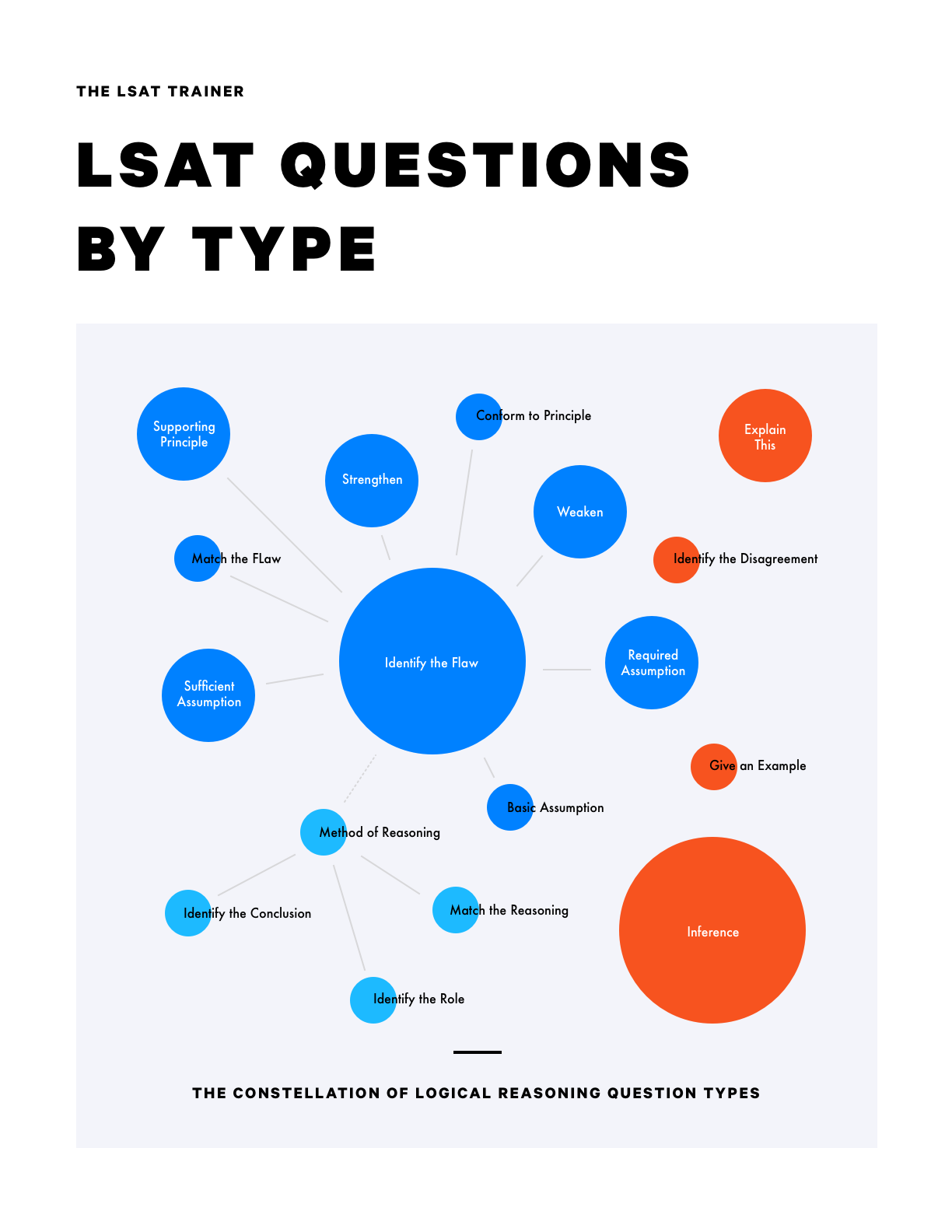Game 1
Step 1
Per the given scenario, we can write out the seven elements to be placed - F, H, I, L, P, S, and T, and we can lay out the three floors to which they can be assigned, in vertical order. We can also notate that any one floor can have up to four elements assigned to it.
Step 2
Per the second rule, we can create two frames, one in which I is on the first floor and H on the second, and another in which I is on the second floor and H on the third.
Step 3
Per the third rule, we can place L into the open floor in each frame, with an indication that no other elements can go on the same floor.
Step 4
Per the first rule, we can split our frames up further, to represent the two options we have in each frame for where we can place PT.
Step 5
We can notate that F and S are not directly restricted by any of the given rules.
Game 2
Step 1
Per the given scenario, we can write out the seven elements to be placed - F, G, H, I, K, L, and M, and we can lay out the seven positions to be filled, in order.
Step 2
Per the first rule, we can notate that G must be immediately before K.
Step 3
Per the second rule, we can notate that H is before the GK duo, and that H is not the first element.
Step 4
Per the third rule, we can notate that I and L must be next to one another.
Step 5
Per the fourth rule, we can notate that M must be on the first three elements.
Step 6
Per the fifth rule, we can notate that F must be first or seventh.
Game 3
Step 1
Per the given scenario, we can write out the eight elements to be placed - G, J, M, P, R, S9, S3, and W, and we can create a T diagram with four slots each for the classes she does take (in) and the classes she does (out).
Step 2
Per the given scenario, and in anticipation of other conditional rules to come, we can notate that, because she can’t take both statistics courses, taking either would force her not to take the other.
Step 3
Per the first rule, we can notate that if she doesn’t take R, she must take J, as well as the contrapositive.
Step 4
Per the second rule, we can notate that if she takes M, she cannot take J, as well as the contrapositive. We can connect this to our notation for the first rule.
Step 5
Per the third rule, we can notate that if she takes S9, she cannot take W, as well as the contrapositive.
Step 6
Per the fourth rule, we can notate that if she takes P, she must take S9, as well as the contrapositive. We can connect this to our notation for the third rule.
Step 7
Per the fifth rule, we can split our diagram into two frames, one in which she takes G but not W, and another in which she takes W and not G. For the second frame, per our conditional rules, we can infer that she must not take S9 and she must not take P.
Step 8
Per the second rule, in the second frame, the final out position must be occupied by J or M. That inference now allows us to fill in all of the in positions as well.
Game 4 (Option 1)
Step 1
Per the given scenario, we can write out the six elements to be placed - L, M, N, T, V, and W, and we can lay out the six positions to be filled, in order.
(Note that for the following rules it can be especially helpful to visualize how the notations will go together before you get started.)
Step 2
Per the second and fourth rules, we can notate that V and W must be immediately next to one another, and that there must be exactly two spaces in between L and V.
Step 3
Per the first rule, we can notate that L must come after T. We can connect this to our existing notation.
Step 4
Per the third rule, we can notate that there must be exactly two spaces in between T and M. We can connect this to our existing notation.
Step 5
We can notate that N is not directly restricted by any of the given rules.
Game 4 (Option 2)
Step 1
Per the given scenario, we can write out the six elements to be placed - L, M, N, T, V, and W, and we can lay out the six positions to be filled, in order.
(Note that for the following rules it can be especially helpful to visualize how the notations will go together before you get started.)
Step 2
Per the second and fourth rules, we can create four frames around the limited options we have for how L, V and W can be placed relative to one another: L _ _ V W (frame 1), L _ W V (frame 2), V W _ L (frame 3), and W V _ _ L (frame 4).
Step 3
In the first frame, in order to satisfy the first and third rules, we must place the T immediately before L, and M into the fourth position. This leaves N to fill the third position.
Step 4
In the second frame, in order to satisfy the first and third rules, we must put T and another space before L, then M into the space between L and W. This leaves N for the position between T and L.
Step 5
In the third frame, per the first and third rules, we can notate that T must come before L, and that there are exactly two spaces between T and M. Alternatively, you could have split the frames up per the limited options we have for how to place T and M.
Step 6
In the fourth frame, per the first and third rules, we can notate that T must come before L, and that there are exactly two spaces between T and M. Alternatively, you could have also split the frames up per the limited options we have for how to place T and M.
Step 7
We can notate that N is not directly restricted by any of the given rules.



